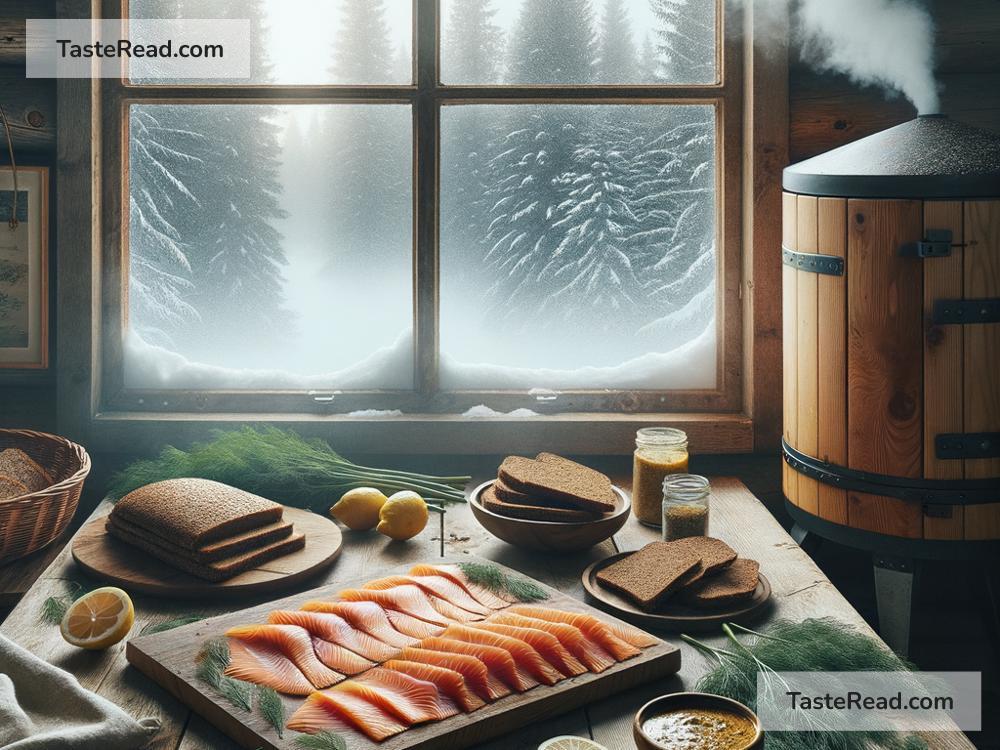Exploring Rustic Smoked Salmon Traditions in Scandinavia
Scandinavia, the northern European region made up of Norway, Sweden, and Denmark, is famous for its stunning landscapes and rich cultural traditions. Among many wonderful culinary treasures in this region, smoked salmon stands out as a star. For centuries, Scandinavians have mastered the art of smoking salmon, creating a dish that is not only delicious but also deeply rooted in their history and way of life. In this blog, we’ll explore the rustic traditions of smoked salmon in Scandinavia, learning about its origins, preparation methods, and cultural significance.
The History Behind Smoked Salmon
Smoked salmon has been a part of Scandinavian cuisine for hundreds of years. In the harsh northern climate, preserving food was essential for survival, especially during long winters when fresh ingredients were hard to find. Smoking fish, particularly salmon, was one of the methods used to ensure food would last longer.
Salmon are naturally abundant in Scandinavia, especially in Norway and Sweden, where rivers and fjords are home to large populations of this flavorful fish. Smoking was the perfect way to preserve salmon. The process prevented spoilage and added rich, smoky flavors that made it even more enjoyable to eat. Over time, smoked salmon became more than just a survival tactic. It turned into a culinary tradition and a symbol of Scandinavian culture.
How Do Scandinavians Smoke Salmon?
Traditional smoking of salmon in Scandinavia follows time-honored methods, passed down through generations. Scandinavian smoked salmon is known for its rustic approach, emphasizing natural flavors and simple ingredients. While methods may vary slightly depending on the region, the general process is the same.
1. Fresh Salmon Is Key
The first step in making smoked salmon is catching or sourcing fresh, high-quality fish. In many Scandinavian villages, fishing is still a way of life, and families pride themselves on the quality of their salmon. The fresher the salmon, the better the final dish.
2. Curing the Fish
Before the salmon is smoked, it is cured to enhance its flavor and prepare it for preservation. The curing process involves rubbing the salmon fillet with a mixture of salt, sugar, and sometimes herbs or spices. In Scandinavian traditions, the ingredients used for curing are often simple, allowing the flavor of the salmon to shine.
The cured fish is left to rest for several hours or even overnight, depending on the recipe. This step not only brings out the salmon’s natural flavors but also removes excess moisture, which helps the smoking process.
3. The Smoking Process
After curing, the salmon is carefully smoked. Traditional Scandinavian methods often use wood from local trees, such as birch, alder, or juniper, to create smoke with a unique aroma. Smoking can be done in special smokehouses, over open fire pits, or even in modern smokers, but the principles remain the same.
There are two main approaches to smoking salmon in Scandinavia: hot smoking and cold smoking. Hot smoking cooks the salmon while adding smoky flavor, resulting in a flakier texture. Cold smoking, on the other hand, keeps the fish raw and delicate, with a silkier texture. Both methods are popular and delicious in their own way.
Smoked Salmon in Scandinavian Cuisine
Smoked salmon is more than just food—it’s a part of Scandinavian identity. It is featured in traditional meals, celebrations, and everyday snacks. One classic dish is a simple rye bread sandwich topped with smoked salmon, fresh dill, and a creamy spread. In Sweden, smoked salmon often appears on the beloved smorgasbord, a buffet-style feast filled with cold and hot dishes.
Another favorite is smoked salmon served with boiled potatoes, sour cream, and chives—a dish that highlights Scandinavia’s love of hearty, natural flavors. During holidays like Christmas or Midsummer, smoked salmon is a staple, often accompanied by pickled herring, cured meats, and aquavit, a traditional Scandinavian spirit.
Smoked salmon has also become a versatile ingredient in modern Scandinavian cooking. Chefs blend traditional techniques with new ideas, such as using smoked salmon in pasta, salads, or even sushi-inspired rolls. Despite these innovations, the respect for its rustic heritage remains strong, keeping the link to the past alive.
The Cultural Significance of Smoked Salmon
In Scandinavia, smoked salmon symbolizes more than just delicious food—it represents connection to nature and tradition. For many people, smoking salmon is a family activity, where older generations teach younger ones the skills and share stories while preparing the fish. It’s also a way to celebrate the region’s natural bounty, showing gratitude for the rivers, forests, and seas that provide food and life.
Even in a modern world dominated by convenience, Scandinavians continue to honor their smoked salmon traditions. Local communities host festivals, workshops, and markets dedicated to showcasing regional smoked fish. These events bring people together, strengthening the bond between tradition and the future.
Final Thoughts
Exploring the rustic smoked salmon traditions of Scandinavia offers a glimpse into the region’s heart and soul. While it began as a simple method of preserving food in tough conditions, smoked salmon has grown into a cherished cultural treasure. Its unique flavors, time-honored preparation, and deep ties to Scandinavia’s natural beauty make it truly special.
Whether enjoyed in a local smokehouse, at a family gathering, or in a cozy café, smoked salmon reminds us of the importance of tradition and the joy of sharing food with loved ones. So, the next time you savor a piece of smoked salmon, think about the generations of people in Scandinavia who perfected the art—one bite at a time!


